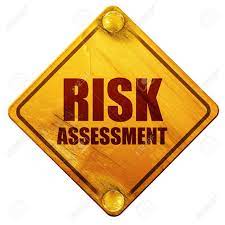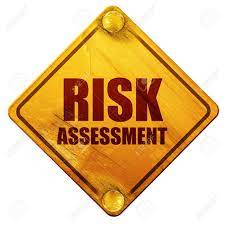Title Page
Risk Assessment Instruction
-
This Risk Assessment is to be used to help identify, evaluate and prioritse actions through hazard identification which may or may not be required to help protect the welfare of one of our employee’s who may be in the process of returning back to work following a specific type of absence where simply going straight back onto the job could cause exabobataion of a current issue.
Before conducting this Risk Assessment you must understand what the person’s circumstances are so that you can carry out associated risk identification.
Assessing impact and likelihood will help manage risk and enable proper planning and actions. -
Conducted on
-
Employee being Risk Assessed
-
Is the employee a shift worker:
-
Current working hours for employee:
-
Total hours worked per week
-
Manager responsible for assessing job role:
-
Are the hours being revised with agreement from all parties:
-
What are the new hours:
-
Is the revised or reviewed working area different?
-
Note: If the area results in a new manager being responsible for the individual’s daily tasks that manager should fill in this Risk Assessment as they know the associated risk with that said job role.
Frequently Asked Questions (FAQ’s).
-
See frequently asked questions PDF attachment for guidance
Describe the details of the employee’s ill health which are relevant to the risk assessment. Consider:
-
Physical Ability: (the ability to perform some physical act).
-
Fitness Levels: (body composition, flexibility, muscular strength, muscular endurance and cardiorespiratory endurance).
-
Effects of prescribed medication: (ability to work safely, tiredness/concentration, mood changes).
-
Emotional and or psychological state: (depression, anxiety, mood).
To be completed by The People Team…
-
When was ill health reported to employer:
-
What was discussed? see guidance
-
What are the issues?
What part of the body is affected?
What actions have taken place so far?
What work has already been carried out? -
Issues discussed:
-
Outcome of discussion:
-
Has the individual seen our company doctor or occupational health specialist?
-
What was the outcome?
-
Are they any recommendations or actions required?
-
Give details of recommendations or actions required:
Silentnight Risk Assessment - Required Daily Tasks
Required Tasks for Daily Duties.
-
List the individual task which could contribute to being an issue:
-
Can the task or tasks be completed without any additional risk of harm to the individual? (Yes, no or yes with adjustments)
-
What help or support is required to help the person achieve the required outcome:
-
If no, have any adjustments been identified to support the individual to carry out this task?
-
Give any information regarding adjustments:
-
Ask the individual person being risk assessed.
If the answer is not known and needs to be tried. The individual will need to try the job out on day 1 and then this Risk Assessment will be updated.
Remember we cannot put them at harm -
List identified adjustments:
-
Can the adjustments be accommodated?
-
Only to be signed off when individual can complete the task safely and it doesn’t put anyone at risk.
-
If no, why?
Silentnight Risk Assessment - Physical Demands
Physical Demands: Standing for long periods
-
Can the task or tasks be completed without any additional risk of harm to the individual? (Yes, no or yes with adjustments)
-
What help or support is required to help the person achieve the required outcome:
-
If no, have any adjustments been identified to support the individual to carry out this task?
-
Give any information regarding adjustments:
-
Ask the individual person being risk assessed.
If the answer is not known and needs to be tried. The individual will need to try the job out on day 1 and then this Risk Assessment will be updated.
Remember we cannot put them at harm -
List identified adjustments:
-
Can the adjustments be accommodated?
-
Only to be signed off when individual can complete the task safely and it doesn’t put anyone at risk.
-
If no, why?
Physical Demands: Sitting For long periods
-
Can the task or tasks be completed without any additional risk of harm to the individual? (Yes, no or yes with adjustments)
-
What help or support is required to help the person achieve the required outcome:
-
If no, have any adjustments been identified to support the individual to carry out this task?
-
Give any information regarding adjustments:
-
Ask the individual person being risk assessed.
If the answer is not known and needs to be tried. The individual will need to try the job out on day 1 and then this Risk Assessment will be updated.
Remember we cannot put them at harm -
List identified adjustments:
-
-
Can the adjustments be accommodated?
-
Only to be signed off when individual can complete the task safely and it doesn’t put anyone at risk.
-
If no, why?
Physical Demands: Walking any distance to complete a task
-
Can the task or tasks be completed without any additional risk of harm to the individual? (Yes, no or yes with adjustments)
-
What help or support is required to help the person achieve the required outcome:
-
If no, have any adjustments been identified to support the individual to carry out this task?
-
Give any information regarding adjustments:
-
Ask the individual person being risk assessed.
If the answer is not known and needs to be tried. The individual will need to try the job out on day 1 and then this Risk Assessment will be updated.
Remember we cannot put them at harm -
List identified adjustments:
-
Can the adjustments be accommodated?
-
Only to be signed off when individual can complete the task safely and it doesn’t put anyone at risk.
-
If no, why?
-
Hours of work / number of continuous days of work (contractually)
Physical Demands: Pushing & Pulling
-
Can the task or tasks be completed without any additional risk of harm to the individual? (Yes, no or yes with adjustments)
-
What help or support is required to help the person achieve the required outcome:
-
If no, have any adjustments been identified to support the individual to carry out this task?
-
Give any information regarding adjustments:
-
Ask the individual person being risk assessed.
If the answer is not known and needs to be tried. The individual will need to try the job out on day 1 and then this Risk Assessment will be updated.
Remember we cannot put them at harm -
List identified adjustments:
-
Can the adjustments be accommodated?
-
Only to be signed off when individual can complete the task safely and it doesn’t put anyone at risk.
-
If no, why?
-
Hours of work / number of continuous days of work (contractually)
Silentnight Risk Assessment - Manual Handling
Manual Handling
-
What is the weight of the heaviest item the individual needs to lift in kilograms?
-
Can the task be completed without any additional risk of harm to the individual? (Yes, no or yes with adjustments)
-
What help or support is required to help the person achieve the required outcome:
-
If no, have any adjustments been identified to support the individual to carry out this task?
-
Give any information regarding adjustments:
-
Ask the individual person being risk assessed.
If the answer is not known and needs to be tried. The individual will need to try the job out on day 1 and then this Risk Assessment will be updated.
Remember we cannot put them at harm -
List identified adjustments:
-
Can the adjustments be accommodated?
-
Only to be signed off when individual can complete the task safely and it doesn’t put anyone at risk.
-
If no, why?
-
Can current manual handling devices (T180’s, Tri Carts etc. be used without any additional risk)
-
Why?
-
Has a maximum lifting weight been advised to the individual?
-
What maximum weight has been advised in kilograms?
Silentnight Risk Assessment - GP Section
GP Section
-
Have you visited your own GP?
-
If yes, when
-
What advice was given from the visit?
-
Are you taking any other medication we need to be aware of?
-
What is it?
-
Are there any side effects?
-
What are they?
-
Have you or are you visiting any physiotherapist?
-
What was the outcome? What advice was given?
-
Are you seeing or going to see any more specialists in the future?
-
If so, when?
Silentnight Risk Assessment - Summary & Outcome
Keeping the company informed
-
As part of this Risk Assessment, you are asked to keep the company informed of anything that you feel is relevant and what might have any impact on your health and wellbeing at work.
We need to keep this Risk Assessment updated with changes and scenarios. You are requested to inform your manager immediately if any of your circumstances change which could put you or a work colleague at risk.
Summary and Outcome of Risk Assessment
-
What is the summary and outcome of risk assessment?
-
Date to be reviewed:
-
Named Individual:
-
Direct Line Manager:
-
A copy of this Risk Assessment document must be sent to The People Team to place on file.
A copy kept for the Manager and a copy given to the individual if they request it.















